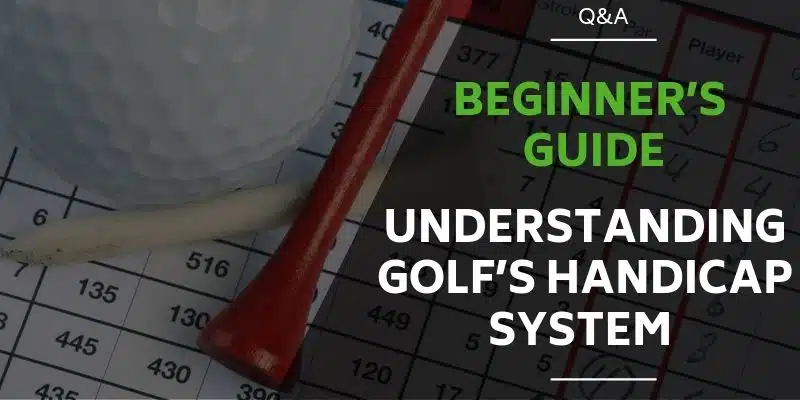When a man in the league of Butch Harmon says that a “3-wood is the hardest club to hit off the fairway,” you take note. Instead, he recommends that the average golfer opts for a 5-wood that provides more loft, making it easier to get airborne.
Just like our irons, fairway woods come in varying degrees of loft, head sizes, and weight to cater to a broader range of players. In this post, we are looking at how to hit a fairway wood. I will provide tips designed to make you a more consistent striker with these woods in hand.
What Does It Take To Crush A Fairway Wood?
Before you can crush a fairway wood, you need to set it up accordingly. The challenge most average golfers have is that their setup is the same for the tee and fairway shots. It is the most common mistake I see amateurs make and, more often than not, results in a fat or topped shot.
Off the tee box, you need to hit the ball on the up since it is placed on a tee. That makes it easier to hit a fairway wood and get it airborne.
On the fairway, however, the required shot is completely different. Your ball is no longer teed up which means if you hit it on your upswing, the club head will hit the ground before the ball resulting in a fat or topped strike. You can see PGA golf coach Rick Shiels demonstrate the process in this video.
Once you know where to position the ball off the tee and fairway, it requires consistent practice to ensure solid ball striking and maximum results.
Types of Fairway Woods
Fairway woods describes a broader category of clubs which are a 3-wood, 4-wood, 5-wood, and 7-wood. Similar to your irons. The degree of loft increases as you move from a 3-wood down to a 7-wood.
The fairway woods most commonly found in a golfers bag is a 3-wood and a 5-wood. Some golfers like myself still play with a 7-wood, while others may even opt for a 4-wood. A 2-wood, on the other hand, is as rare as spotting an Amur Leopard. These days many average golfers have substituted hybrids for woods, given that they provide added forgiveness and assistance in sending the ball skywards.
I have provided a chart with the standard degree of loft for each wood and the iron comparison. Bear in mind that these are based on the standard options for the average golfer. Player’s irons may have strengthened lofts in comparison to the ones listed below.
| Club | Degree of Loft | Iron Comparison |
| 2-wood | 12
|
Similar to a driver with a weakened loft. |
| 3-wood | 15 | 1-iron |
| 4-wood | 17 | 1-iron with weakened loft |
| 5-wood | 18-19 | 2-iron |
| 7-wood | 21 | 3-iron |
How to Hit a Fairway Wood Consistently Well?
To hit a fairway consistently well, you need to know where to place the ball in your stance in different conditions. If you try to hit the same shot with a fairway wood off the tee as you do on the fairway, they will quickly become the least favorite club in your bag.
Let us look at how you can optimize your performance with your fairway woods off the tee and fairway.
Off The Tee
Fairway woods offer you a solid alternative to your driver off the tee. The weakened loft on these woods helps you to get the ball in the air and achieve consistent carry. However, if you are not setting yourself up in the correct position, you will not achieve the desired result.
Step 1 – Tee The Ball Up
I have seen many amateurs go wrong at this point, which is setting yourself up for failure. Many will tee the ball up for a fairway wood to the same height they would for a driver. Agreeably you should follow Annika Sorenstam’s tips and make sure “that half of the ball is above the crown of the clubhead when teeing up for a driver or fairway wood strike.
However, the heads of your fairway woods are thinner and more compact than your driver, and therefore you need to tee it down.
Step 2 – Place The Ball Forward In Your Stance
Since your ball is on a tee, you will need to strike it on the up to catch it sweetly. Placing the ball in line with the inside heel of your front foot is the best way to set up for this shot. But not as far forward as you would with your driver. The ball will then be in the perfect position for you to strike it cleanly on your upswing and crush your shot.
Step 3 – Shift Weight Onto Your Trailing Shoulder
As you need to hit up on a tee shot with a fairway wood, it helps to position weight slightly onto your trailing shoulder. That sets your body up to hit the ball on your upswing.
Step 4 – Catch The Ball On The Centre Line
Now that you have set up for your fairway wood tee shot, all that is left is to swing easy and strike the ball. The desired result is to strike the ball slightly on the up with the centerline of the clubface.
Off The Deck
Your 3-wood is the club with the longest shaft in your bag that you will use off the fairway. Unless you are Tiger Woods and back your ability with a driver off of the deck. The length of the shaft is what makes it such a difficult club to play off the turf.
To optimize your performance with your fairway wood off the fairway, you need to set it up differently.
Step 1 – Place the Ball Towards The Middle of Your Stance
While you should still place the ball towards the front of your stance, it should be more towards the middle than the setup for your tee shot. The reason for this is that now it is not possible to hit the ball on the up. You need to strike the ball like you are hitting an iron. Therefore, you need to hit down on the ball instead of up.
Step 2 – Keep Your Shoulders Square
Once the ball is positioned towards the middle of your stance, move your shoulders in line with your clubhead. It assists you to swing down and through the ball, unlike your shoulder position for your tee shot.
Step 3 – Hit Down on the Ball
To hit a crisp fairway wood strike, you need to make contact with the ball first. That should leave you with a small divot in front of where the ball lay. You may find that this technique will result in no divot at all. To achieve this you need to hit down on the ball to catch it cleanly on your downswing.
Step 4 – Shift Your Body Weight To Your Leading Leg
When you are hitting a fairway wood off the deck, you need to move with your swing so that you shift the weight onto your front leg on the downswing to deliver a gradual angle of attack to make clean contact with the ball and swing through. Not like the setup for a tee shot where we need to hit the ball on our upswing.
Step 5 – Make Contact With The Ball First
Following the above steps will help you to strike more pure fairway wood shots. However, there is one last step to remember. And that is to make contact with the ball first and then the ground. Because we don’t have the luxury of a tee on the fairway, we need to strike the ball on our downswing to catch it cleanly.
If you hit behind the ball you will either hit your shot fat or the clubhead will bounce up and over the ball causing you to top your shot.
Final Thoughts
Knowing how to hit a fairway wood can be a game-changer on the scoring front. It gives you more chance of a birdie on Par 5’s and offers a more forgiving option off the tee. Remember, place the ball forward and hit up on fairway wood shots off the tee. Conversely, set the ball up slightly towards the middle of your stance, and hit down off the deck.
If you found this tip helpful, you may find our post on how to stop lifting up on a golf downswing of interest.
Related Articles
- How to Drive a Golf Ball Further; Perfecting Your Distance.
- How To Improve Your Chipping. See Better Results & Lower Scores
- 5 of The Best Fairway Woods For High Handicappers
Nick is the founder of GolfSpan and an avid golfer. He's not quite a pro but has over 15 years of experience playing and coaching golfers worldwide. His mission is to bring the golfing community a better experience when it comes to choosing the right golf gear and finding the right setup for your game.






